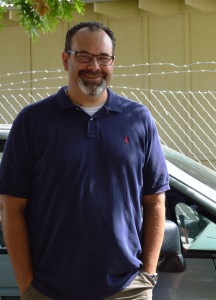Meet a Member: Laura Seifert
Here’s the latest in our series of entertaining interviews with a diverse array of your…
 Here’s the latest in our series of entertaining interviews with a diverse array of your fellow SHA members. Meet a member for the first time or learn something about a colleague that you never knew before. This blog series also offers current members an opportunity to share their thoughts on why SHA membership is important (Camaraderie? Professional service? Exchange of ideas in conference rooms and beyond? You tell us!). If you would like to be an interviewee, please email the Membership Committee Social Media Liaisons Eleanor Breen (ebreen@mountvernon.org) or Kim Pyszka (kpyszka@aum.edu).
Here’s the latest in our series of entertaining interviews with a diverse array of your fellow SHA members. Meet a member for the first time or learn something about a colleague that you never knew before. This blog series also offers current members an opportunity to share their thoughts on why SHA membership is important (Camaraderie? Professional service? Exchange of ideas in conference rooms and beyond? You tell us!). If you would like to be an interviewee, please email the Membership Committee Social Media Liaisons Eleanor Breen (ebreen@mountvernon.org) or Kim Pyszka (kpyszka@aum.edu).
 An Interview with Dr. Todd Ahlman, the Director of the Center for Archaeological Studies at Texas State University where he manages archaeological research for the university and other public and private clients.
An Interview with Dr. Todd Ahlman, the Director of the Center for Archaeological Studies at Texas State University where he manages archaeological research for the university and other public and private clients.
Fieldwork or labwork?
Both. Besides the fact that I get to work outside, the instantaneous discovery that occurs in the field is exciting and refreshing. In the lab, I enjoy getting an in-depth look at the material culture and putting all the pieces together to better understand past human behavior.
What would be your dream site to work at?
Every site is a dream site because I get to do archaeology. I mean really, I have a dream job.
What are you currently reading?
I’m currently reading the Encyclopedia of Caribbean Archaeology edited by Basil A. Reid and R. Grant Gilmore III and published by the University Press of Florida. It is a great summary of the diversity in the Caribbean.
What did you want to be when you grew up?
When I was a kid I wanted to be a football player for the Minnesota Vikings, a doctor, or president. I actually figured out at age 15 that I wanted to be an archaeologist. Indiana Jones had no input into my decision; it was just a love of the past and things. My old brother has told me he knew it was fate because I was always intrigued by the ceramic and glass sherds we found while playing as kids. There have been a lot of people along the way who have influenced my path of becoming an historical archaeologist, but being an archaeologist is what I’ve always wanted.
Why are you a member of SHA?
This is a good question and one I ask myself every year before I join. I am mainly a member for the journal, but I’ve found our journal has become less cutting-edge theoretically and topically in the past 5-7 years. That being said, the content in the journal is still the best for those interested in historical archaeology and that’s why I am still a member.
At what point in your career did you first join SHA?
I joined SHA sometime in the early or mid-1990s, not long after I started graduate school.
How many years have you been a member (approximately)?
18-19 years
Which article from Historical Archaeology has been the most influential to you?
The one article that has been most influential to me isn’t one that I’ve read, but one I published in the journal in 2009. It was a four year odyssey to get it published and if it wasn’t for some prodding by Joe Joseph, it may not have been published. What it taught me was to never give up when it comes to getting something published. As long and frustrating as the process may be, you must stay positive and push forward.
Which benefit of belonging to SHA do you find the most beneficial?
The journal is the biggest benefit on a long-term basis, but I think the conference is the most beneficial to the society because we get to meet our colleagues face to face.